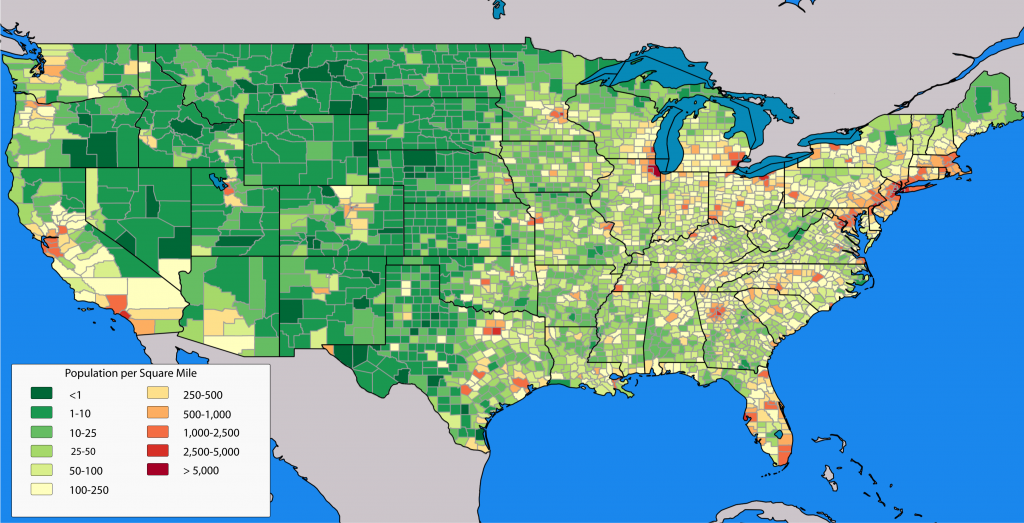Agricultural Density Definition Human Geography
Attention:This post was written a few years ago and may not reflect the latest changes in the AP® program. We are gradually updating these posts and will remove this disclaimer when this post is updated. Thank you for your patience!
Introduction
Many people know what it means to refer to population density, but few have actually heard the term physiological density. The reason is that population density is actually a broader category of understanding the amount of people in a given area, while physiological density is one of three different methods of doing just that. As a result, most people refer only to population density and not the method used to understand it. In this AP® Human Geography Review we will look at a physiological density definition to know what it really is and just how it relates to population density as a whole.
How Population Density is Measured
The first method used to measure population density is the arithmetic density, which is the total number of people in any given area as compared to one square unit of land. The total number of people is divided by, for example, one kilometer, to determine the average density on that acre. Agricultural density measures the number of farmers specifically on each unit of farmland. This means people who work the earth on specific plots of land that are used for this. It may still measure by kilometer, but it only measures kilometers of farmable land.
Physiological density is located right in the middle of these. It measures the total number of people and divides them between the total amount of farmable land. So the amount of land to be used is much smaller than for arithmetic density but the amount of people is much larger than what is used in agricultural density. All three of these are used to get a more accurate understanding of the population density of any given area, but they will then be used in different ways according to the type.
Understanding Physiological Density
To understand a physiological density definition, let's look at an example. Let's say we have City X, which is home to 10,000 people, 6,000 of whom are farmers, and has a square area of 10,000 kilometers and a farmable square area of 4,000 kilometers. If we look at the arithmetic density, we come up with a population density of 1 person per kilometer (10,000/10,000). If we look at the agricultural density we come up with 1.5 people per kilometer (6,000/4,000). Finally, if we look at the physiological density, we come up with 2.5 people per kilometer (10,000/4,000). Each of these numbers tells us something different.
The key is making sure that we measure each of the methods because they are all going to be important to understand the rest of the world and how we will go about getting the food and shelter needed for the number of people in each country or city. By better understanding who is relying on each region of the world, we can better allocate resources and understand how current resources are already being allocated. By better understanding the amount of food that is being used in any given area or the amount of food that may be still needed in order to support the people already living there and the total amount of people and the total amount of land, we can better understand (approximately) how crowded the people are in the country. Of course, it's important to remember that the population density is an average, not a direct relation.
Why We Measure Physiological Density

The physiological density of the area helps us better understand how many people are relying on a certain area of land. We are better able to understand how much food is being produced in the area and just how many people it really needs to feed. In our example, one kilometer of farmland needs to be able to feed 2.5 people. Of course, we made this a simple example just for the sake of understanding it, but in reality, the numbers would be much higher. We would be able to understand just how prosperous (or poor) a certain region of the country or world really is.
We use physiological density as a way of understanding just how long a certain region of farmland (also known as arable land) is going to be good for. The higher the population density we find from this method, the faster the arable land is going to be used up or reach its output limit. That means there won't be enough land for the people that are coming into the area. In our example, if 100,000 more people moved to the same area, we would end up with a physiological density of 27.5 people per square kilometer and as the numbers continue to go up and up we start to consider whether there's really enough food for everyone.
Physiological Density Around the World
Singapore tops the list when it comes to countries with the highest physiological density, at nearly 4 times that of the second highest (Hong Kong); Singapore has a density of 440,998 per square kilometer of arable land. When we view Hong Kong, we see 131,101 and Djibouti gets us 51,861. Remember, this is the number of people who are relying on one square kilometer of land to get all their food (though there is a lot of imports in these countries as well), and these numbers continue to rise.
Other countries have extremely low physiological density. For example, Australia has a density of only 43 people per square kilometer of arable land. Kazakhstan has only 69, and Canada is at only 78. This means that there are fewer people living in the country compared to the amount of farmland that they have. In these countries, farmland is more plentiful than in many of the higher density countries, which tend to have more urban areas and a lot less farmland. After all, when we look at the overall population density (the arithmetic density), we come up with 6,483. While still high, that's a far cry from 440,000.
Physiological Density and Averages
It's important to keep in mind that averages play an important role in physiological density. When we say that the physiological density of Canada is 78, that does not mean that 78 people live in every square kilometer of arable land. What it means is that for every one square kilometer of arable land in the country, there are 78 people somewhere in the country. After all, there's no way that you could have people living only in the arable land area of a country. There wouldn't be enough room in many of them, and that would leave large open spaces.
Keep in mind Singapore with its 6,483 person arithmetic density and 440,998 physiological density. Singapore has an arable land percentage of only 1.47%, which means that of all the land in the country, less than 2% is arable. People are still living in the other 98%, but they can't farm it. Also, there's no way even of using arithmetic density as a direct method of understanding the number of people in each kilometer of land, because the actual density is going to be different in each one.
Physiological Density on the AP® Human Geography Exam

One of the most helpful portions of each AP® Human Geography Crash Course Review is our focus on the AP® Human Geography exam. On your AP® Human Geo exam, you may be asked to consider different types of population density. You're likely going to need to define what exactly physiological density is and why it's important for each country to understand theirs, so you will need a working physiological density definition. For example, study questions have considered a number of factors. Physiological population density is viewed as a superior measure of population density for what reason? It is more reflective of population pressure on arable land. Make sure you also know how physiological density is affected, for example, by countries that have lower levels of arable land or higher levels of population (or both).
Conclusion
This guide considers population density and how it relates to physiological density specifically. The different types of density are each important to understanding a specific area of the world, but physiological density is often considered real population density because it provides a better understanding and overview of the country it relates to. This can be used in entire countries or it can be used on a smaller scale, but in general, it should be considered one of many different ways to understand how people are being cared for within a specific region. This AP® Human Geography study guide aims to help you understand what you might need to know when you take the AP® exam.
So, what do you think is going to be the hardest part about understanding physiological density?
Looking for AP® Human Geography practice?
Check out our other articles on AP Human Geography.
You can also find thousands of practice questions on Albert.io. Albert.io lets you customize your learning experience to target practice where you need the most help. We'll give you challenging practice questions to help you achieve mastery in AP® Human Geography.
Start practicing here .
Are you a teacher or administrator interested in boosting AP® Human Geography student outcomes?
Learn more about our school licenses here.
Agricultural Density Definition Human Geography
Source: https://www.albert.io/blog/physiological-density-ap-human-geography-crash-course-review/
0 Response to "Agricultural Density Definition Human Geography"
Post a Comment